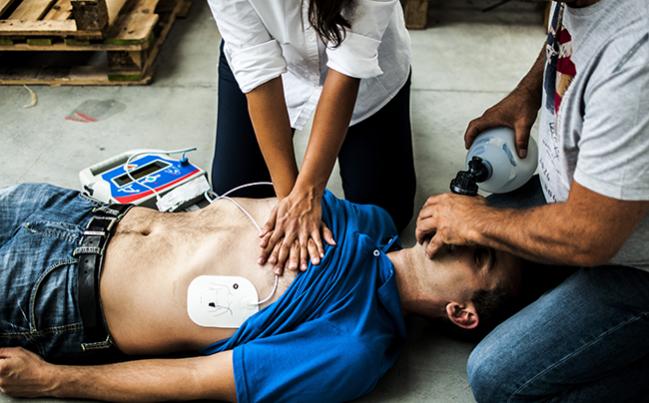Cardiac arrest is a sudden loss of heart function, which can lead to death if not treated immediately. The most common cause of cardiac arrest is an electrical problem in the heart, such as ventricular fibrillation or pulseless ventricular tachycardia.
Symptoms of cardiac arrest include:
Sudden collapse
No pulse or heartbeat
No normal pulse or heartbeat
No signs of normal circulation, such as blood pressure or pulse
Loss of consciousness
No breathing or only gasping for breath
Treatment for Cardiac Arrest
The treatment for cardiac arrest involves immediate cardiopulmonary resuscitation (CPR) and use of an automated external defibrillator (AED) if available. CPR involves chest compressions and rescue breaths to restore blood flow and oxygen to the heart and brain. The AED is a portable device that analyzes the heart’s rhythm and delivers an electrical shock to restore normal heart function.
Advanced life support measures, such as advanced airway management and intravenous medications, may be necessary in certain cases. After successful resuscitation, further diagnostic tests and treatments may be needed to determine the underlying cause of the cardiac arrest and prevent recurrence.
It is important to note that prompt recognition and treatment of cardiac arrest are crucial for survival. Timely CPR and use of an AED can double or triple the chances of survival. Bystander CPR and AED use can make a difference in an emergency and may save someone’s life.
Conclusion
Cardiac arrest is a life-threatening condition that requires immediate action. The symptoms of cardiac arrest include sudden collapse, loss of consciousness, and absence of normal pulse and breathing. The treatment for cardiac arrest involves CPR and use of an AED, along with advanced life support measures if necessary. Prompt recognition and treatment are essential for survival and can greatly improve the chances of a positive outcome.

 Home
Home Health
Health Diet & Nutrition
Diet & Nutrition Living Well
Living Well More
More












